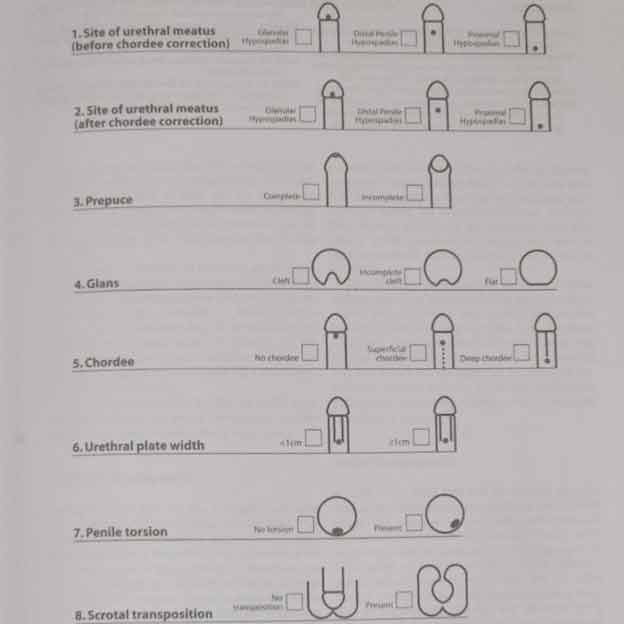Our Care Before Surgery
THE EVALUATION FOR HYPOSPADIAS SURGERY
What happens before a hypospadias repair?
Before a hypospadias repair, you’ll meet with Dr. Niles and the team of providers. For international clients, typically a telemedicine visit is normally completed to update clinical information and forward digital images via a cybersecure, HIPAA compliant format – Doxyme.com.
Upon arrival at one of our providing hospitals, we evaluate and document your child’s general health and take vital signs (temperature, pulse and blood pressure). Dr. Niles will also perform a detailed physical examination of your child’s penis.

Illustration
The above diagram is an illustration of the issues a hypospadiologist has to consider in correcting your child’s penis with hypospadias
Tell your child’s healthcare providers about any prescription or over-the-counter (OTC) medications your child takes, including herbal supplements. Aspirin, anti-inflammatory drugs and certain herbal supplements can increase your child’s risk of bleeding.
Tell your child’s providers about any allergies your child has as well. Include all known allergies, including to medications, skin cleaners like iodine or isopropyl alcohol, latex and foods.
Your healthcare providers will also give you specific directions on when to give your child food or drinks before the procedure. These directions vary based on your child’s age. It’s important to follow these directions. If your child has fluids or food in their stomach, there’s a chance they could vomit (throw up) while under anesthesia. If they throw up, they may inhale food or fluid into their lungs (pulmonary aspiration). Pulmonary aspiration may cause aspiration pneumonia and asphyxiation.
Dr. Niles will also explain the procedure to you and give you tips on keeping calm before the surgery, which helps your child relax. Tips may include paying attention to your body language, facial expressions and tone of voice. Your child may not have the ability or vocabulary to understand what’s happening. Still, they can pick up on your non-verbal cues. The calmer you are, the more relaxed your child will be.
How long does a hypospadias repair take?
A hypospadias repair may take up to two to four hours. The duration depends on the complexity of the reconstruction to be performed. Cases more than four hours have occurred and are not a cause for alarm.
WHAT ARE THE ADVANTAGES OF SURGICAL REPAIR OF HYPOSPADIAS ?
The advantages of hypospadias repair include:
• Reconstructing your child’s urethra to the tip of their penis to allow for normal peeing and ejaculating.
• Straightening their penis.
• Improved appearance.
WHAT ARE THE RISKS / BENEFITS OF HYPOSPADIAS SURGERY?
How successful is hypospadias surgery in babies?
Hypospadias repair in general has a high rate of success. This is particularly the case for native cases that have never been subjected to surgery.
When your child has a history of multiple surgical attempts at repair that have failed then the outlook changes. A history of complications such as glans dehiscence, severe scarring, glans volume loss, skin deficits, skin grafting onto the penile shaft and fistulas change the outlook and the probability for total normality must be discussed and adjusted based on these historical surgical outcomes. This is why we advocate getting the surgery “right” the first time so as to minimize complicating issues further even though the reality is the best surgeons in the world all have complications.
